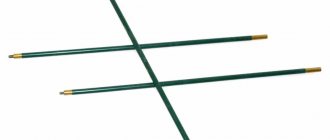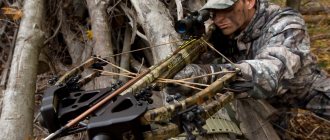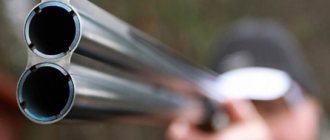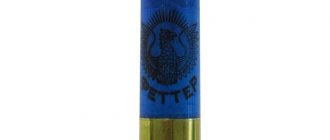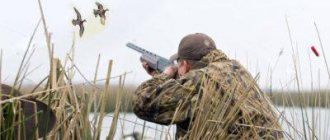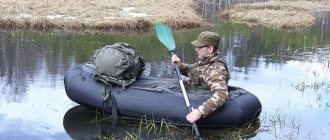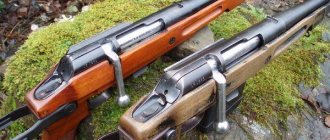Choosing the right binoculars is not an easy task. To ensure that buying binoculars in the future does not turn into an unpleasant mistake, you need to be thoughtful about choosing them.
Therefore, before going to the store, you should familiarize yourself with the main types and characteristics of binoculars.
Further advice from professionals will tell you how to choose binoculars that will suit your needs.
Varieties
Today there are various models of hunting optics on the market. But all types of binoculars are usually divided into groups according to their performance and characteristics. This division, of course, is quite arbitrary, but to a certain extent it allows you to make a choice.
Size
Based on their dimensions, binoculars for hunting can be classified into the following types:
- compact, light weight, but modest in size;
- medium size, heavier, but also more powerful;
- standard, weighing quite a lot, but providing good range performance;
- monoculars, light and compact, but seriously straining the eyesight.
Multiplicity
An important parameter that influences the choice of binoculars for hunting is its magnification.
According to this indicator, devices are usually divided into the following gradations:
There are also types of binoculars with variable magnification.
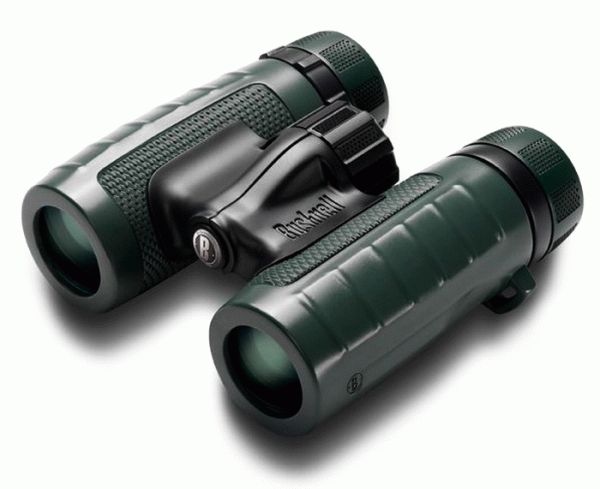
External Lens Size
Another important parameter that affects the characteristics and capabilities of an optical device.
Based on lens size, binocular types are divided into the following groups:
Of course, the larger the diameter of the lenses, the greater the magnifying power, power and efficiency. But along with the growth of this indicator, as a rule, the dimensions of the device, its weight, and cost also increase.
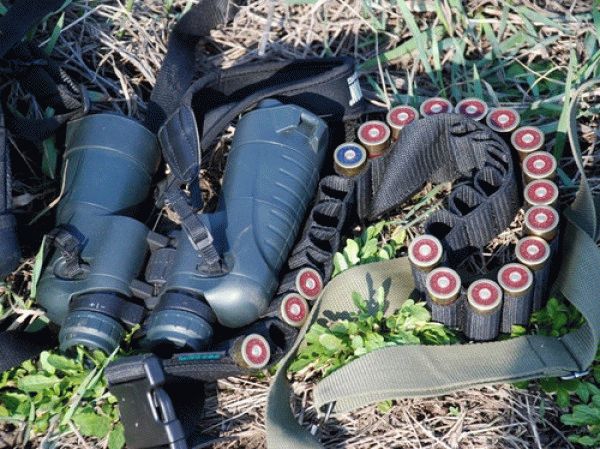
Prism type
The type of prism plays a significant role in choosing binoculars for hunting.
Today there are two main types:
- roof type, when the lenses are located on the same axis, which makes the device lighter and more compact;
- porro scheme, in which the lenses are slightly offset relative to the eyepieces, which allows for higher image quality and depth.
Exit pupil (PS)
The exit pupil is the diameter of the image visible through binoculars . The larger this parameter, the more detailed the object can be examined and the less light is needed for this . Thus, for binoculars for observation while walking, hiking or hunting, this value should be quite large, since such a device is better suited for use in low light conditions . The diameter of the exit pupil is equal to the quotient of the binocular aperture divided by its magnification.
Lens diameter/magnification = PS
So for 10x50 binoculars the PS is 5mm (50/10).
Oddly enough, this parameter is related to the size of the pupil of your eye , and it changes depending on age .
| Age | Exit pupil |
| Child | About 8mm |
| Up to 50 years | About 6mm |
| More than 50 years | About 4mm |
Criterias of choice
It is impossible to unequivocally answer the question of how to choose the right binoculars. A lot depends on the hunting conditions, the behavioral characteristics of the intended prey, and the preferences of the hunter himself. However, there are a number of criteria that are almost universal when choosing an optical device for hunting.
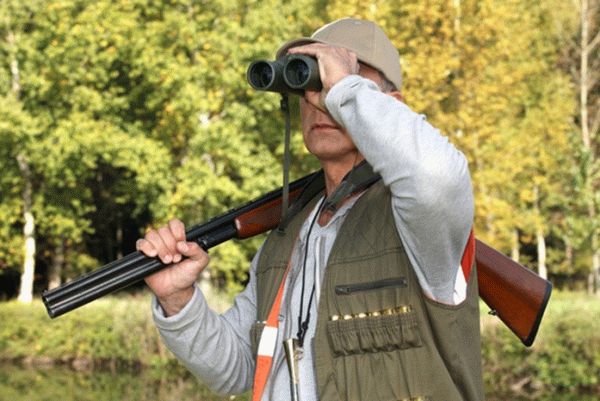
Multiplicity indicators
No matter how paradoxical it may sound, the pursuit of multiplicity characteristics is not always advisable. Sometimes compact models cope with their functions quite successfully and efficiently, without burdening the hunter with excess weight and impressive dimensions.
A case in point: when hunting in a dense forest, the wide field of view of binoculars is not critical, but the bulky dimensions, due to which the device constantly clings to bushes and branches, and also stretches the neck, causes a lot of inconvenience to the hunter. In a forest belt, 7-8x magnification is quite enough.
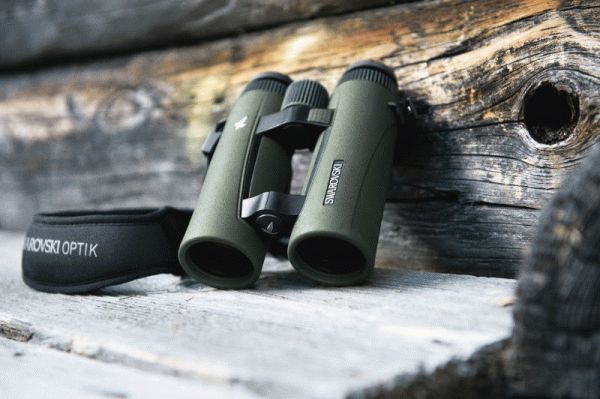
The steppe or wide open spaces are another matter. Here, compact binoculars are inferior in their characteristics and efficiency indicators to more powerful devices with 10x or even 12x magnification.
In mountainous areas, the magnification of binoculars should be maximum. Often, in order to survey large areas, track a target, assess its value, distance to it and reachability, binoculars with a rangefinder for hunting of maximum magnification, mounted on a special tripod, are used.
Lens diameter
The diameter of the lenses directly affects the aperture of the binoculars, which affects the clarity, contrast and range of the image. In addition, the diameter of the lenses affects characteristics such as field of view, focusing and viewing angle.
This is interesting: Rules of behavior and actions of the population during fires
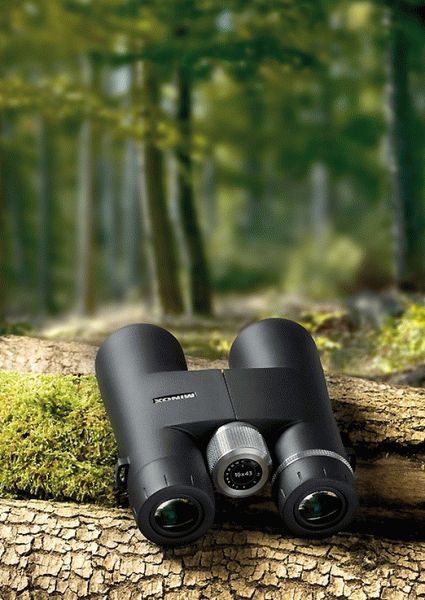
Indicators of visual field breadth
This quantity is also called the “linear field”. It is measured in meters per kilometer. And the higher this value, the easier it is for the hunter to observe and navigate the terrain. The results of recent scientific research indicate that the optimal lens sizes for the human eye are the standards 35, 40 and 50 mm.
Best Models for Surveillance
Canon 10x30 IS II
An elegant model of binoculars that will appeal to even the most experienced users of optical instruments. The product has an ergonomic shape, being a binocular with an optical stabilizer, which ensures image clarity during long-term observation, windy weather and exposure to other adverse factors. The optical device has the following competitive characteristics:
- Porro prism;
- interpupillary distance adjustment - 55-75 mm;
- central focusing;
- field of view at a distance of 1 thousand m – 105, real angular – 6°;
- 7 optical elements;
- lenses with multilayer coating;
- rubberized body that is not afraid of moisture and dust.
The model is quite functional, but at the same time its weight does not exceed 600 g. The cost of optics from Canon reaches 40,000 rubles, and, of course, comes with a case.
Price: RUB 34,990
Fujinon 7×50 WPC-CF
An excellent model for observation with a Porro prism, which costs 28,000 rubles. Optics features include:
- weight – 1200 g, plastic case;
- availability of interpupillary distance adjustment (56-72 mm);
- presence of a compass and nitrogen/argon filling;
- impact-resistant rubberized body, not afraid of moisture and dust;
- protection from dust and moisture.
The binoculars have central focusing, the lenses are multi-layer coated, and the field of view at a distance of 1 thousand m is 126 m, the real angular one is 7.2°.
Price: RUB 27,990
Optimal performance for hunting binoculars
Since we are talking about the optimal performance that binoculars for hunting should have, it is necessary to dwell on some other nuances. The answer to the question of which binoculars are better is not always the value of its cost.
It is desirable that the optical device also have the following characteristics:
- waterproof and moisture resistant;
- the presence of a convenient focusing mechanism and the ability to correct diopters;
- the presence of rangefinder and goniometer grids, allowing you to calculate the distance to the target and its size.
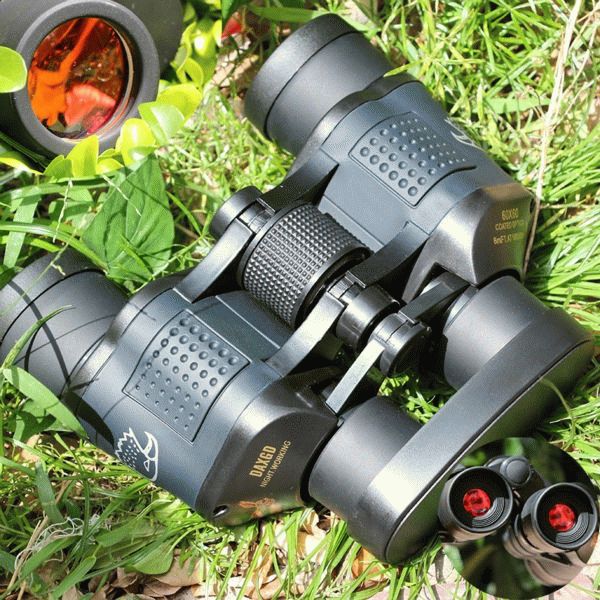
And although there is no ideal model, the optimal option, which has the greatest versatility for any type of hunting, seems to be an optical device of the following configuration:
- binocular magnification ranges from 6-8x;
- lens diameter from 30 to 50 mm;
- porro prisms with a field of view from 6° and maximum binocular aperture;
- rubberized body, protective eyepiece cases, protective case.
This is a basic set of necessary requirements, which can be changed in accordance with the specific conditions in which the hunt will be conducted and the personal preferences of the hunter himself.

The best models for the theater
Veber Opera BGC 4×30
Sleek binoculars that fit well in your hand. The design combines bright colors, the model provides 4x magnification, is distinguished by central focusing and the presence of an interpupillary distance adjustment function. The cost of binoculars reaches 2,500 rubles; they will be an excellent addition to a chic evening outfit and will not tire your hand.
Price: ₽ 2,520
LEVENHUK Broadway 325F
Classic theater binoculars, decorated with a cord, which makes the process of operation more pleasant and convenient. The model is complemented by a built-in LED backlight and a function for adjusting the distance between the pupils in a wide range (55-70 mm). Focusing is central, the product is made of metal, the field of view at a distance of 1 thousand m is 109 m, the real angular one is 6°. The price of this stylish optical device reaches 3,300 rubles, but the weight does not exceed 200 g.
Price: RUB 3,290
Variety of models and prices
The modern market for hunting weapons and equipment offers so many different models and types of optical devices that it is not possible to choose just one binocular as a kind of standard. Moreover, the market continues to develop rapidly. Today, in a completely ordinary store, you can easily purchase, for example, night vision binoculars for hunting, equipped with a rangefinder reticle similar to that found on optical sights.
And innovative technologies, actively being introduced in the civilian market, are making hunting optics more and more functional, convenient and versatile. Just recently, binoculars with a rangefinder for hunting, which seemed like a curiosity, have already become a completely common reality.

Types and best manufacturers of binoculars
There are many types of binoculars, but most often they are classified according to their purpose:
- observation models,
- theatrical,
- hunting,
- marine,
- electronic digital with recording function,
- thermal imaging,
- powerful astronomical models,
- children's,
- fishing,
- rangefinders and others.
Today, the listed types of binoculars can be found in the lines of the brands Canon, Nikon, Bresser Optics, Leica Camera, Bushnell - these are European and American manufacturers who have gained an impeccable reputation in the segment of production of optical instruments and equipment in general.
Care, storage and transportation
Caring for binoculars intended for hunting, regardless of its type, design features or characteristics, is not particularly difficult. Like any optical device, hunting binoculars require periodic cleaning of lenses and adjustment mechanisms. Most often, a cloth soaked in a soap solution, a brush or a can of compressed air is sufficient for this.
For reliable storage and safe transportation, almost any hunting binoculars are equipped with a special case. Obviously, when transporting an optical device, sharp shocks, shocks, falls and other mechanical or shock impacts should be avoided. Otherwise, no special measures are required to deliver the device to the hunting site and back.
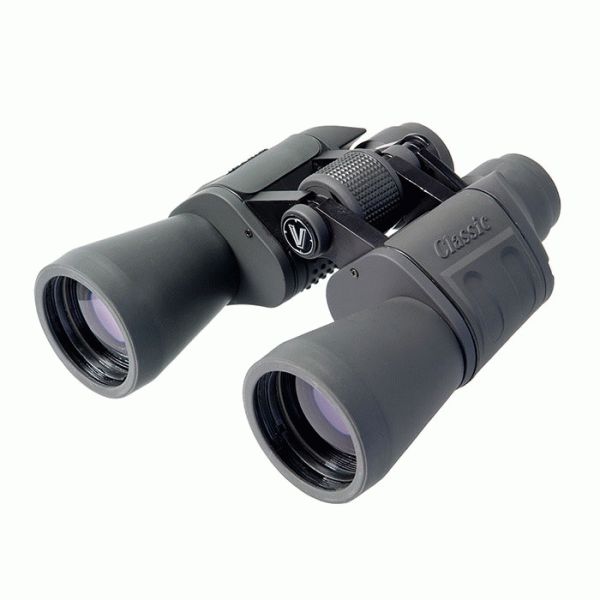
Operating principle of the optical device
To decide which binoculars are best to buy, you need to have basic knowledge regarding the operating principle of this device. The optics of the product are enclosed in two identical tubes that are connected to each other. The wider outer part is the lens. It is this that determines the viewing angle and the brightness of the picture, which must be taken into account when choosing binoculars. The narrower part that we bring to the eyes is the eyepiece. Between these two points there are lenses, prisms, and mirrors that can not only magnify the image, but also provide a stereoscopic “volumetric” effect.
Criterias of choice
What technical requirements must binoculars meet in order not only to guarantee a successful hunt, but also to warn in case of danger? Unfortunately, there are no universal devices that would suit any “bloodthirsty” person - everyone has their own idea of the best binoculars for hunting. But there are criteria that every optical device that takes part in such an important task must have.
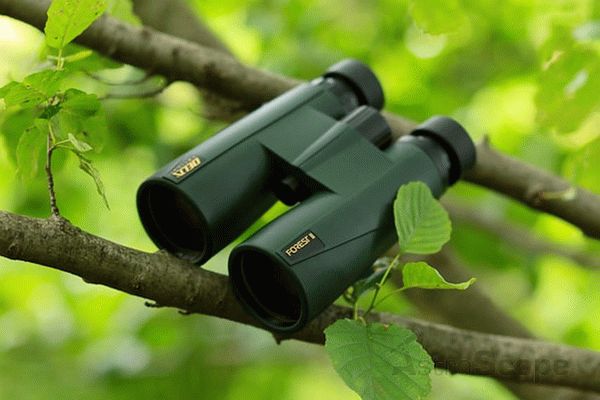
Binoculars for hunting
Multiplicity indicators: dependence on terrain and potential production
The magnification is the maximum possible magnification. It can be different:
- less than 8;
- from 8 to 9;
- from 10 to 15;
- from 16 and above.
In a forest area, the magnification of binoculars can be 7 or 8. This indicator will allow you to easily see a large bird in the foliage, and easily notice the “heavyweights” - a wild boar or a bear. A larger value can complicate these searches.
The open spaces of the steppe and forest-steppe require a different approach, since the first place will be the presence of a good approximation. The best option here would be 10x magnification. It is better not to consider a larger indicator, since long-term observation of an object will lead to fatigue that will not allow you to concentrate - your hands will begin to tremble.
In the mountains, to objectively assess potential production, you only need “heavy artillery” - binoculars with a magnification of 12 or more. However, most often preference is given to the former, but their use also implies the obligatory presence of a tripod.
This is interesting: DIY water-repellent impregnation for shoes
Objective lens diameter: the second important criterion
On the body of any binoculars you can see a marking of two numbers. For example, 7x50. If the first number indicates the magnification of the device, then the second is precisely this indicator, indicating the diameter of the lens. And the larger it is, the better you can see through it, when the illumination of the area still leaves much to be desired.
Field of view latitude indicators: linear and angular
This characteristic is called the field of view, it denotes the width of observation coverage, it is measured either in meters (linear) or in degrees (angular) and it is notable for its strong “ties” with the magnification, since the greater the first indicator with the same lens, the less there will be a second one. Therefore, it is better to choose hunting binoculars from devices that have the following parameters:
- 8x30 or 8x40;
- 7x35 or 7x40;
- 6x30 or 6x40.
It is good to conduct daytime observation with a device with the first characteristics in this list. At dusk or dawn, the second or third option will be suitable.
What qualities still need to be taken into account?
If you need binoculars for hunting, how to choose just one from all the variety? There are several additional features that can seriously affect its ease of use. They are usually inherent in high-quality models.
- Individual focusing. It allows you to adjust each eyepiece, because not everyone has the same degree of myopia or hyperopia in both eyes.
- Antireflective coating. It can be either single-layer or multi-layer. These compounds reduce light reflection, so the image becomes clear and bright. If untreated lenses steal up to 40% of the light flux, then after treatment this value is reduced to 2.5%. Multilayer coatings are preferable. They come in a variety of colors: the favorite colors here are purple and green.
- Types of prisms There are 2 types of hunting binoculars: porro prisms and roof prisms. If the former are small in size, the advantage of the latter is a more realistic and three-dimensional image.
- Goniometer and rangefinder grids. An experienced person will most likely not need such a “feature,” but for beginners, binoculars with a rangefinder will be a bonus.
Technical characteristics are only one side of the coin. Therefore, we need to pay attention to other qualities that may be important for many.
Vote
Which binoculars do you think are the best?
Sturman 14×32
6.56 % ( 4 )
Spectrum 10x25
3.28 % ( 2 )
WYJ04-01 Good purchase
1.64 % ( 1 )
Eschenbach Viva 6x15
4.92 % ( 3 )
Bresser Scala 3×25 MPG
0.00 % ( 0 )
KAMEEL 3x25
0.00 % ( 0 )
Veber Eureka
0.00 % ( 0 )
Edu-Toys BN009
8.20 % ( 5 )
Canon 15x50 IS
22.95 % ( 14 )
Nikon Aculon A211 10x50
39.34 % ( 24 )
Operational requirements for hunting “weapons”
Binoculars for hunting and fishing should have many advantages, which in a critical situation can seriously help out both experienced and novice “St. John’s wort”.
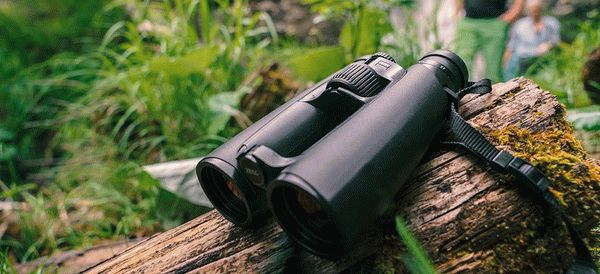
Binoculars for hunting should be convenient and comfortable
- Accessories: convenience and comfort
The material for belts and cases must be soft but durable. The first ones should be wide so as not to create problems if you have to cover long distances. The covers protecting the eyepieces must be fixed to the body.
- Sealing: first priority
When purchasing, you need to pay attention to the WP marking, which indicates that the product is equipped with seals that prevent moisture from penetrating inside. There is a category of hunting binoculars that are completely sealed. This provides dry nitrogen. Such binoculars cost a lot, but one can doubt the advisability of their use.
- Light and compact: important for long distances
If forced marches are expected to be large enough, then hunting uniforms should not be an obstacle to movement. It would be good if the optical device was hinged, which would allow the pipes to be brought together when it is not needed. Weight is a relative concept; it all depends on both the characteristics of the hunt and the severity of the intended prey.
- Reliability: “amulet” against blows
Impact resistance and durability depend on the quality of materials and assembly features of the structure. You cannot buy binoculars with a plastic body: models intended for hunting are made of aluminum, which is covered with rubber-plastic. More expensive binoculars are made from magnesium alloys or carbon fiber.
The best models for fishing
Bushnell H2O 10×25 130105
This stylish optical instrument features a Roof prism and multi-coated lenses. The body is plastic, but it is rubberized, resistant to dust and moisture, which is important for professional fishermen and amateurs. The weight of this model is 290 g, the field of view at a distance of 1 thousand m is 114 m, retractable eyecups and nitrogen/argon filling are provided. The cost of such an optical device reaches 5,000 rubles.
Price: RUB 5,143
LEVENHUK Atom 7×50
7x50 binoculars are suitable for fishermen, because their body is protected from dust and moisture, it is rubberized, so the optical device will definitely not slip out of your hands. Complemented with rubber eyecups and central focusing, the main features include the recommended tripod mount. Please note that the field of view at a distance of 1 thousand m reaches 112 m, the real angular one is 8°. The cost of an optical device ranges from 4,500 rubles.
Price: ₽ 4,590
Optimal performance for hunting binoculars
Which binoculars should you choose for hunting? A rich assortment allows everyone to find the right model. The following algorithm can be a hint:
- first identify the most reliable models;
- then, among them, identify those that correspond to the concept of an optimal device from a technical and optical point of view;
- from those remaining on the list, choose the most preferable one - both in terms of quality and cost.
Which binoculars are best for hunting? Here is the list of characteristics:
- Lens diameter - 50 mm.
- Protection from moisture.
- Multiplicity - 10.
- Multi-layer anti-reflective coating - green or purple.
- Prism type - porro.
- The presence of a rangefinder or goniometer reticle.
- Eyepiece covers that are fixed to the body.
There are universal binoculars for hunting and fishing: any model will be good if its main markings are 6x30, 7x35 or 8x40.
Prism
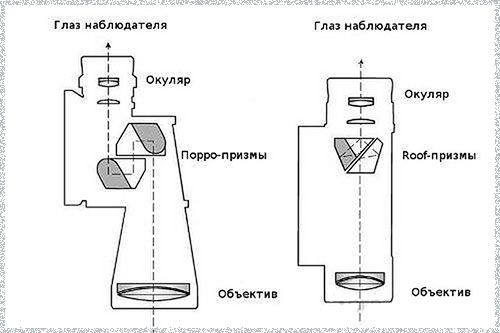
There are two types of prisms - porro and roof. Roof prism binoculars have lenses and eyepieces on parallel lines. This makes it possible to make the binoculars smaller in size, but this often degrades the image quality.
Binoculars with porro prism have a larger distance between the lenses than between the eyepieces. They provide a more voluminous, realistic image, and are cheaper than their counterparts with a roof prism.
Rating of binoculars for hunting
This list includes both Russian binoculars for hunting and foreign products. The rating took into account bestsellers, reviews from serious publications and ratings from ordinary users.
This is interesting: How to tie a double Austrian wire knot
Carl Zeiss Victory 8*56 T*RF
The best rangefinder binoculars for hunting. The quality of all components of this design is at its best. In addition to the magnesium alloy housing, absolute tightness and dry nitrogen, which ensures no fogging, the following advantages can be noted:
- high clarity in low light conditions;
- wide field of view;
- small dimensions and weight;
- fast response of functions;
- 4 lenses in each lens.
There is also a “fly in the ointment” - the exorbitant cost.
Leica Ultravid 10*42 HD
This is a compact, premium device. The image turns out great - contrasty and clear, and these binoculars are able to withstand large temperature changes, falls into water or from a height. It uses roof prisms, which are equipped with phase correction. The advantages include:
- no distortion;
- treatment of lenses with antireflective coating;
- housing filled with nitrogen;
- long service life;
- light weight and dimensions.
There is also only one drawback of the device - the high price.
Nikon Aculon A211 10x42
The best Japanese example of value for money, which can safely be called a station wagon.
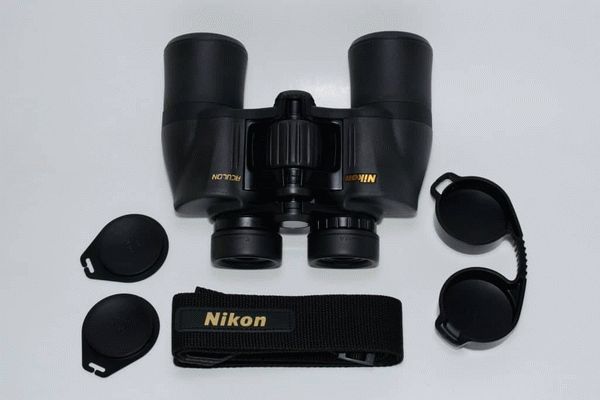
It owes its success to its small dimensions and high-quality optics. Advantages:
- impact protection;
- compactness;
- rubberized body inserts;
- tripod mount;
- bag included.
There is a small drawback, it is a easily soiled body, but this is unlikely to scare off a large number of hunters.
BRESSER HUNTER 8-24X50
The German manufacturer positions these binoculars as a universal device that can be successfully used in the city, outdoors and for fishing or hunting. Among the features of the binoculars are:
- shockproof housing;
- use of porro prisms;
- pancreatic system enlargement;
- tripod mount;
- rubber body inserts.
There is a downside: if the magnification is increased to 14, then problems with image clarity begin.
LEVENHUK Sherman 10x50
Russian products have long won their place in the sun. The entire range is distinguished by clear optics and excellent performance in low light.
- exceptional moisture protection;
- diopter adjustment;
- large porro prisms;
- the body has rubber inserts;
- the presence of nitrogen in the housing protects the device from fogging.
No deficiencies could be found.
Pentax 7×50 Marine Blue
The ideal binoculars for extreme situations: the waterproof housing, which is filled with nitrogen, and optics with high light sensitivity, providing excellent visibility, are not the only advantages, as there are:
- rangefinder scale;
- backlight;
- built-in compass;
- navigation markings.
This extreme device has one drawback - its price is not very attractive.
Bushnell Falcon Vari Zoom 10-30x50
This entire model range is included in two lists at once - in the hunting rating of binoculars, as well as in the list of devices assessed by experts in relation to price and quality. Magnitude adjustment and an instant focus change system are not the only advantages of the model; they also include:
- very high quality optics;
- good aperture;
- shockproof housing;
- compactness.
The downside is the lack of protection from moisture.
Veber BPC ZOOM 10-30×60
This device can be recommended even to professional hunters. In addition to the high-quality image, which is ensured under any conditions, it is worth noting the convenience of the rubberized body, the lens diameter is 60 mm, and the magnification factor is up to 30. The last advantage is the reason for the only drawback: the power of the device requires a tripod at high magnification.
Bushnell H2O 8x42 Roof
Another representative of this company in the ranking. Convenient and compact, guarantees complete protection against fogging and water resistance. It features clear and contrasting optics. No shortcomings were noticed.
Olympus 8×40 Zoom DPS
It will be a good choice not only for hunters, but also for tourists. It has a good balance of price and quality, excellent sharpness and aperture ratio, as well as small dimensions. Among the minuses, it should be noted the lack of moisture protection and distortion from the edge of the lenses.
Other Features: Design, AR, Protection
In terms of prism design, binoculars come in two types: porro and roof. Porro prism is the most common prism in modern binoculars. This type is easily recognizable. It is very durable and gives images high brightness.
roof 
An important parameter is the coating of optics (AR) , which involves applying layers of certain substances to the optical surfaces of binoculars that increase light transmittance . By the way, this is only necessary for roof lenses , since only they need gluing, which increases the possibility of optical aberrations.
AR comes in four types:
- partial single-layer clearing (C);
- full single-layer coating (FC);
- multilayer partial antireflection (MC);
- full multi-layer coating (FMC).
how important the level of protection of binoculars that are used outdoors, and even on water, is. To ensure the integrity of this rather expensive device, manufacturers have developed a whole range of precautions to ensure the “survival” of the device in any conditions.
Thus, binoculars are traditionally certified according to the Japanese industrial standard for water resistance JIS 6 , where the degree of vulnerability to water varies from 0 to 6. In addition, electronic binoculars are certified according to the already familiar IP standard and usually receive a degree of IP67 , which is not bad at all, since it gives reliable protection from any weather troubles. The binocular body is often filled with a gas, such as nitrogen . This is done in order to avoid fogging of the lenses during temperature changes or during fog.
Linear field of view and viewing angle
The value of the linear field of view is determined at a distance of 1000 meters. It is calculated by the distance from the rightmost to the leftmost point of the area visible through binoculars. The visible area is also expressed in degrees and is called the visual angle. Typically, field binoculars have a wide angle of view, for example, for a 7 x 35 device it is 8 degrees or 140 meters, and for 8 x 40 binoculars it is 7.5 degrees or 131 meters. This means that if you build an equilateral triangle with an apex of 8 degrees, then at a distance of 1000 meters the base will be 140 meters, and with an apex of 7.5 degrees it will be 131 meters. Such binoculars with a wide field of view are called wide-angle.
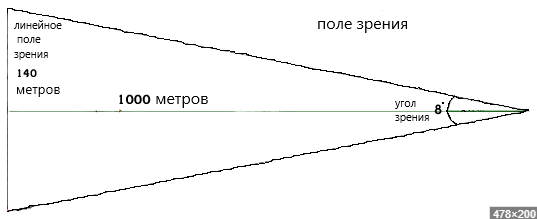
The larger the linear field of view and, accordingly, the viewing angle, the more valuable information you will receive. In this case, it is easier to monitor the area and track moving objects. The smaller the linear field of view and viewing angle, the greater the resolution of the device, which means you will see more details of the observed object. For field binoculars, the optimal values of the linear field of view are at least 105 meters and the viewing angle is at least 6 degrees.
Which brand of binoculars is better to choose?
The companies presented below are manufacturers of reliable lighting equipment for home and industrial use. Their products are manufactured using the latest equipment in accordance with international standards, providing good visibility, safety and comfort while using resources efficiently.
- Veber is a Russian company that has been producing optical equipment since 1994. Measuring and observational optics, equipment used by criminologists, doctors, scientists, is sold in a chain of stores throughout the country. The assortment is constantly updated with current models and accessories;
- Levenhuk is a company founded in 2002 in the USA, but already in 2007 an office was opened in the capital of Russia. The brand produces telescopes, binoculars, microscopes, magnifiers, monoculars, and equipment for astronomy enthusiasts . Products are sold in more than 37 countries;
- Eschenbach – more than 600 people work for the company, founded in Germany in 1913. The company, with an annual turnover of 120 million euros, produces frames, glasses and special optics, exporting more than half of its products to 70 countries;
- Nikon is a brand with a hundred-year history that produces high-end photographic equipment and optics. The company from Japan occupies a leading position among manufacturers of equipment for science and medicine, optics for professionals and amateurs;
- Olympus is a brand from Japan that produces voice recorders, photographic equipment, optics, and medical equipment. Microscopes, thermometers, and specialized equipment of high quality are supplied to the countries of Europe and Asia. Production is located in China and Vietnam;
- Yukon - the company produces day and night optical and optical-electronic devices for researchers, fishermen, tourists, and hunters. The advanced functionality technology was created for specialists in various fields, experienced and novice users;
- Bresser is a company founded in 1957 in Germany. The brand produces optical devices for adults and children using innovative technologies. Long-term warranty and technical support, good quality of the product is liked by customers;
- Canon – products for recording, processing and printing images, equipment for medical diagnostics of the company from Japan has been known since 1933. About 200 thousand people work in the company's branches in Europe, Asia and the USA. The brand is a sponsor of sporting events and public organizations;
- Pentax is a brand that has been producing optical equipment since the beginning of the 20th century. The company's staff, which consisted of several people at the time of its founding, now numbers more than 10 thousand in branches of different countries. The company produces high quality binoculars, microscopes, lenses, cameras, telescopes and endoscopes.
Which binoculars are best to buy?
Once you understand how to choose binoculars, you can purchase good optics with high-quality images. Devices for observing performances, nature, celestial objects and professional powerful devices differ in magnification ratio, dimensions, additional functions, and price. Therefore, experts advise focusing on the following nominees:
- The Levenhuk Broadway 325F model is suitable for comfortable viewing of performances. A good cheap device with 3x magnification, transmitting a clear image;
- The compact Nikon Aculon A211 8×42 will appeal to fans of extreme hiking in the harsh conditions of rain forests, tundra, and mountains. Enlarges the picture 8 times, the case is strong, protects from moisture and damage;
- The Canon 12×36 IS III is ideal in all respects for lovers of the starry sky. The optical stabilizer guarantees a clear picture, and the powerful rubberized body guarantees durability.
The choice of optics depends on the purpose of the purchase. Your child should buy inexpensive binoculars to observe nature. Hunters and fishermen choose moisture-resistant models with an anti-glare option. To observe the sky, it is better to pay attention to devices with high magnification.
Magnification or factor
The magnification in binocular markings is indicated by numbers before the “x” icon. It can be fixed: 7 x 30, 8 x 34, as well as variable (with the ZOOM function): 8-16 x 21. Optimal for field binoculars is a device with a fixed magnification of 6x, 7x, 8x or 10x (10x is the limit in which hand-held observation is possible). If the object is to be examined in more detail, then more than 10x will be suitable, but observation will be difficult due to image shake. In this case, you need to install the binoculars on a tripod. It should be taken into account that an increase in magnification leads to a decrease in aperture ratio; in order to eliminate this, the diameter of the lenses must be installed in larger sizes, and this, in turn, leads to an increase in the weight and size of the device, which will become more difficult to carry. Still, the practical significance of field binoculars is to recognize an object, and not to see it close-up, so you should not chase the magnification.


